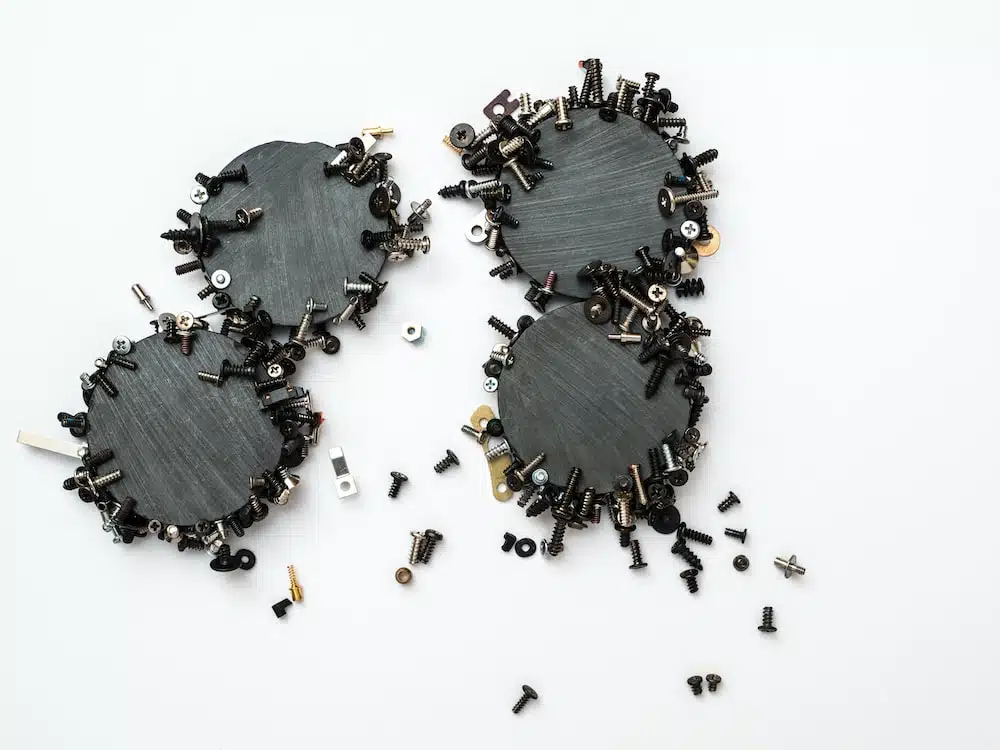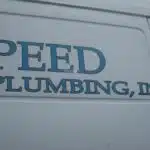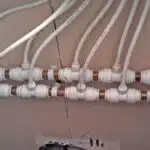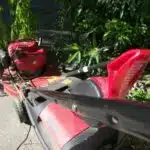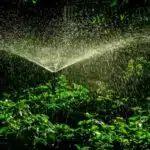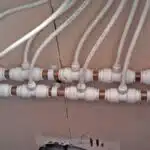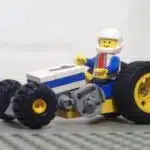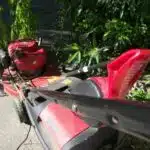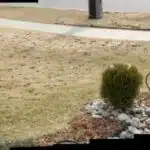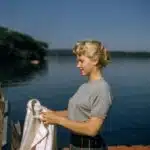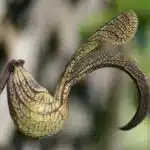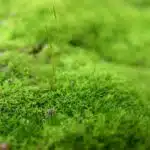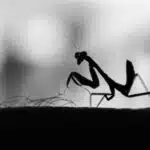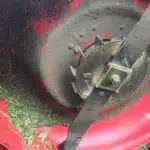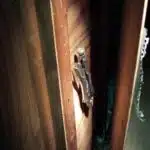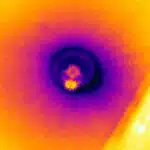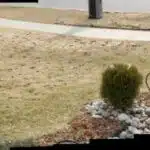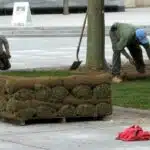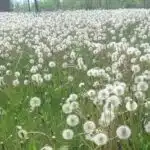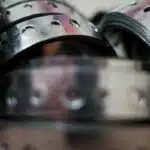As a professional sprinkler installation and repair technician, I have witnessed countless homeowners struggling with broken lawn sprinkler pipes. While repairing these pipes may seem like a daunting task, it can be done with the help of compression couplings. These simple yet effective devices can save you time and money on costly repairs.
Compression couplings provide an easy solution for fixing leaks or breaks in your sprinkler system. They work by compressing the pipe around the damaged area, creating a tight seal that prevents water from leaking out. This method is particularly useful for repairing small sections of pipe without having to replace the entire line. With proper installation and maintenance, compression couplings can extend the lifespan of your sprinkler system while keeping your lawn healthy and green all season long. In this article, we will explore the benefits of using compression couplings, how to install them properly, and how they can help you avoid costly repairs down the road.
Understanding The Anatomy Of Your Sprinkler System
A well-maintained sprinkler system is a key element in keeping your lawn healthy and green throughout the year. Understanding sprinkler system zones and choosing the right sprinkler heads are two important factors that contribute to the overall health of your lawn. Sprinkler system zones refer to the different areas of your lawn that require different levels of water. For example, shaded areas may require less watering than sunny areas.
Choosing the right sprinkler heads can also make a big difference in how efficiently your sprinkler system works. There are several types of sprinkler heads available on the market, each with its own specific purpose. Some are designed for large areas while others are designed for narrow or irregularly shaped areas. It’s important to choose the right type of head for each zone in order to ensure maximum efficiency and water conservation.
Identifying common sprinkler pipe problems is an important part of maintaining your sprinkler system. By understanding how your system works and being able to identify potential issues, you can save time and money by fixing problems before they become major repairs. In the next section, we’ll discuss some common problems you may encounter with your sprinkler pipes and how to fix them using compression couplings.
Identifying Common Sprinkler Pipe Problems
As a sprinkler installation and repair technician, it’s important to understand the different types of problems that can arise with sprinkler pipes. One common issue is damage to the pipes themselves. There are several causes of sprinkler pipe damage, including freezing temperatures, soil shifting, and physical damage from lawn equipment or other objects. It’s important for homeowners to be aware of these potential causes in order to prevent them from occurring.
If left unaddressed, damaged sprinkler pipes can lead to significant water waste and higher utility bills. As such, it’s crucial for homeowners to know what signs of pipe damage to look for. These may include low water pressure, wet spots or pools of water in the lawn, or even geysers caused by pressurized water escaping through a crack or hole in the pipe. By being vigilant about these signs of trouble, homeowners can catch problems early and avoid costly repairs down the line.
When it comes to repairing damaged sprinkler pipes, there are several options available. However, one increasingly popular choice is using compression couplings. Compression couplings offer a number of benefits over traditional repair methods such as cutting out and replacing damaged sections of pipe. For example:
- They’re quick and easy to install
- They don’t require any special tools or skills
- They provide a strong seal that’s less likely to leak than other repair methods
By using compression couplings for repairs instead of more traditional methods, homeowners can save time and money while ensuring their lawn stays green and healthy all season long.
Benefits Of Using Compression Couplings For Repairs
When it comes to repairing lawn sprinkler pipes, compression couplings are a popular choice among sprinkler installation and repair technicians. These couplings offer several advantages over other repair methods, including ease of use, affordability, and durability. However, there are also some disadvantages to consider before using compression couplings for repairs.
One of the main advantages of compression couplings is their ease of use. Unlike other repair methods that require cutting and welding, compression couplings simply slide onto the damaged pipe and are tightened in place. This makes them a quick and convenient option for repairing lawn sprinkler pipes.
Another advantage of compression couplings is their affordability. Compared to other repair methods that require specialized tools or materials, compression couplings are relatively inexpensive. This makes them an attractive option for homeowners who want to save money on lawn sprinkler repairs.
However, there are also some disadvantages to consider when using compression couplings for repairs. One potential issue is that they may not be as durable as other repair methods. Over time, the pressure from water flowing through the repaired section may cause the coupling to loosen or even fail completely.
| Advantages | Disadvantages |
|---|---|
| Ease of use | May not be as durable as other repair methods |
| Affordability | Pressure from water flow may cause loosening or failure |
Overall, while there are some disadvantages to using compression couplings for repairs, their ease of use and affordability make them an attractive option for many homeowners. However, it’s important to carefully weigh the pros and cons before deciding whether or not to use these types of fittings for your lawn sprinkler repairs.
Moving forward into types of compression couplings available…
Types Of Compression Couplings Available
After learning about the benefits of using compression couplings for repairs, it’s important to know that there are different sizes, materials, and brands of compression couplings available in the market. Choosing the right one can be a daunting task, but considering certain factors can help make the decision easier.
When choosing a compression coupling, the first factor to consider is size. It should match the size of your sprinkler pipe. Compression couplings come in various sizes, so it’s crucial to measure the diameter of your pipe before purchasing one. The second factor is material. Compression couplings are made from different materials such as brass, PVC, and stainless steel. The choice of material depends on various factors such as cost, durability, and compatibility with your existing system.
Lastly, brands also play a significant role in choosing the right compression coupling for your repair job. There are many reputable brands in the market that offer high-quality products designed to last for years. By doing research and reading reviews on different brands and their products, you can choose one that best suits your needs.
By taking into account these factors when selecting a compression coupling for your repair job, you can ensure that your sprinkler system will be repaired with a durable and reliable part. In the next section, we will discuss tools you will need for this job to complete it successfully without any hassle or delay.
Tools You Will Need For The Job
As a sprinkler installation and repair technician, it is important to have the right tools for the job. When repairing lawn sprinkler pipes using compression couplings, there are a few essential tools that you will need. These include a hacksaw or pipe cutter, channel lock pliers or adjustable wrenches, Teflon tape, and of course, compression couplings.
Before beginning any repairs, it is important to take safety precautions to ensure that you do not injure yourself or damage your property. Make sure to shut off the water supply to your sprinkler system before starting any repairs. Additionally, be sure that the area around your work site is clear of any obstacles or trip hazards.
While compression couplings are an effective method for repairing lawn sprinkler pipes, there are alternative repair methods available. These include using PVC cement and fittings or replacing the damaged section of pipe altogether. However, if you choose to use these methods instead of compression couplings, be aware that they may require additional time and expertise to complete properly. Ultimately, the best repair method will depend on the specific needs of your sprinkler system and the extent of damage present.
To ensure a successful repair process and prevent further damage to your sprinkler system, it is important to know how to properly shut off your sprinkler system before beginning any repairs. In the next section, we will discuss step-by-step instructions for shutting off your sprinkler system so that you can begin making necessary repairs with confidence.
How To Shut Off Your Sprinkler System
- To shut off a sprinkler system, the water shutoff valve must be located and turned off.
- After the water is shut off, the sprinkler heads must be individually shut off by either unscrewing the head from the pipe or by using a shutoff tool to pinch the pipe.
- In order to use a shutoff tool, the tool must be inserted into the pipe and firmly pushed against the pipe to create compression and shut off the water in the pipe.
- If the pipe is leaking or damaged, a compression coupling should be used to repair it prior to shutting off the water.
- The compression coupling should be placed over both ends of the pipe and tightened with a wrench to secure the coupling and ensure that the pipe is sealed.
- Once the pipe is repaired, the shutoff tool can be used to pinch the pipe and shut off the water.
Water Shutoff Valve
Picture yourself standing in your front yard, gazing at the sprinkler system that waters your lush green lawn. Suddenly, you notice a fountain of water shooting up from one of the sprinkler heads. You rush over to investigate and find that there is a leak in the pipe. As a sprinkler installation and repair technician, you know that repairing leaks requires shutting off the water supply to the entire system. This is where the water shutoff valve comes into play.
The water shutoff valve is an essential component of any sprinkler system. It allows you to turn off the water supply to your entire system quickly and easily. If you need to make repairs or replace damaged valves, turning off the water supply with this valve will ensure that you do not create further damage or waste any precious water.
Using compression couplings to repair lawn sprinkler pipes has become increasingly popular among homeowners and professionals alike. These couplings provide a quick and easy solution for fixing leaks without having to dig up large areas of your lawn. However, before using these couplings, it’s crucial to remember to shut off your sprinkler system’s water supply using the water shutoff valve first.
In conclusion, knowing how to shut off your sprinkler system’s water supply with the water shutoff valve is essential when repairing leaks or replacing damaged valves. Using compression couplings can be a quick and easy way to fix these issues without having to dig up large areas of your lawn. As a sprinkler installation and repair technician, I highly recommend familiarizing yourself with these processes so that you can keep your lawn looking healthy and beautiful year-round!
Sprinkler Heads
Sprinkler heads are one of the most crucial components of any irrigation system. They are responsible for distributing water evenly across your lawn, ensuring that every part of it gets the right amount of hydration. However, over time, sprinkler heads may become damaged or clogged, resulting in uneven water distribution or even complete failure to water certain areas.
To ensure that your sprinkler system is running efficiently and effectively, regular maintenance of your sprinkler heads is essential. One of the most common issues with sprinkler heads is clogging due to dirt and debris. To prevent this from happening, it’s recommended to clean your sprinkler heads periodically by removing them and rinsing them with water.
Another common issue with sprinkler heads is damage caused by lawnmowers or other equipment. If you notice that a particular area of your lawn is not getting enough water or if you see a broken or missing sprinkler head, it’s essential to troubleshoot the problem as soon as possible. This can involve digging up the area around the affected head to locate any damages and replace the damaged head with a new one.
Overall, proper maintenance and troubleshooting tips can help keep your sprinkler system running smoothly all season long. By taking care of your system’s components such as its sprinkler heads and using preventative measures like cleaning and regular inspections, you can ensure that every inch of your lawn receives adequate hydration while saving money on water bills in the process.
Shutoff Tools
As a sprinkler installation and repair technician, I highly recommend having shutoff tools on hand when working with your sprinkler system. These tools are essential for repairing pipes and preventing water damage in case of emergencies. There are different types of shutoff tools available, such as ball valves, gate valves, and stop-and-waste valves.
Ball valves are commonly used for residential properties because they are easy to operate and reliable. Gate valves, on the other hand, require more force to turn but provide better control over water flow. Stop-and-waste valves are typically used in colder climates where pipes need to be drained to prevent freezing during the winter months.
When using shutoff tools, it’s crucial to know how to properly turn them on and off to avoid damaging your sprinkler system. Before starting any work on your irrigation system, make sure you locate the main shut off valve and turn it off completely. This will prevent water from entering the system while you work.
To use shutoff tools properly, follow these steps: First, turn off the main valve. Second, open all the drain valves or faucets located below ground level. Third, attach the shutoff tool onto the valve stem firmly and turn it clockwise until it stops turning. Fourth, test the valve by turning on a faucet or sprinkler head above ground level. Finally, when you’re finished with your repairs or maintenance work, remember to close all drain valves and faucets before reopening the main valve.
In conclusion, having shutoff tools accessible is an essential part of maintaining your sprinkler system’s health. By understanding different types of shutoff tools available and how to use them correctly without causing any damage or leaks in your irrigation system, you can save yourself time and money while ensuring that your lawn stays healthy throughout each season.
Preparing Your Work Area
Before starting any repair work on your lawn sprinkler pipe, it is essential to prepare your work area. This step ensures a safe and efficient repair process that helps you avoid further damage to the system. The first thing to do is to clear debris around the affected area. Any loose rocks, leaves, or other items should be removed from the surrounding area.
Next, mark the damaged section of the sprinkler pipe using a marker or spray paint to ensure that you cut out only the damaged part. This step is critical because cutting out an unnecessary section of pipe can lead to additional problems in the future. Additionally, marking the damaged area will help you keep track of where you need to place your compression coupling.
Once you have cleared debris and marked the damaged section of your lawn sprinkler pipe, you are ready for the next step: cutting out the damaged pipe section. By following these preparation steps, you will be able to make a successful repair on your lawn sprinkler system without wasting time or causing further damage.
Cutting The Damaged Pipe Section Out
First, use a saw or pipe cutter to cut out the damaged section of the pipe.
Next, clean the cut ends of the pipe and remove any burrs or sharp edges.
After that, slide a compression coupling onto each end of the pipe and tighten the nuts until the seal is secure.
Finally, check the seal and ensure that the joint is secure before activating the sprinkler system.
Cutting The Pipe
As sprinkler installation and repair technicians, we are often faced with the task of cutting out a damaged section of a lawn sprinkler pipe. It is important to use proper tools when performing this task, as it can affect the overall quality and efficiency of the system.
When cutting the pipe, it is important to take safety precautions to ensure that no accidents occur. One should always wear gloves and eye protection, in case any debris or shards fly out during the cutting process. In addition, using a saw blade specifically designed for cutting through PVC piping is crucial to make clean cuts without damaging the surrounding area.
The use of compression couplings has made repairing lawn sprinkler pipes much easier than before. By properly cutting out the damaged section and replacing it with a new piece of pipe using compression couplings, we can create a strong bond that will withstand pressure and prevent leaks from occurring. With the right tools and safety measures in place, cutting out damaged sections of lawn sprinkler pipes can be done quickly and efficiently.
Preparing The Coupling
When cutting out a damaged section of a lawn sprinkler pipe, it is important to prepare the coupling that will be used to join the new piece of pipe. This involves measuring accurately and cleaning the surfaces that will be joined. Accurate measurement ensures that the coupling fits snugly and securely over the cut ends of the pipe, while cleaning removes any dirt or debris that could interfere with the bonding process.
To measure accurately, one should use a measuring tape or ruler to determine the length of pipe needed for replacement. It is important to take into account any bends or curves in the existing pipe to ensure that the new piece fits properly. Once the correct length has been determined, it should be marked on the new pipe using a pen or marker.
Next, both ends of the cut pipes must be cleaned thoroughly using sandpaper or emery cloth. This helps to remove any dirt or debris that could interfere with bonding and ensures a smooth surface for better adhesion. In addition, it is important to clean inside and outside of the coupling itself before attaching it to either end of the cut pipes. A clean surface on all sides will ensure proper bonding and prevent leaks from occurring.
Measuring And Cutting The Replacement Pipe
Now that the damaged section of the pipe has been cut out, it’s time to measure and cut the replacement pipe. Measuring techniques are crucial to ensure that the new pipe fits snugly into place without any gaps or leaks. The easiest way to measure is to hold the replacement pipe up against the remaining sections of the sprinkler system and mark where it needs to be cut.
Once you’ve measured the correct length for the replacement pipe, it’s time to cut it. Pipe cutting tools are essential for a clean and precise cut that will fit perfectly into place. A hacksaw or PVC cutter can be used for this task. Be sure to use even pressure when cutting, as uneven pressure can cause jagged edges that won’t fit properly into the compression coupling.
Now that you have your replacement pipe measured and cut, it’s time to move on to installing the compression coupling. This fitting will connect both ends of the replacement pipe seamlessly with the existing sprinkler system pipes. Here’s how it’s done…
Installing The Compression Coupling
- Gathering materials for installing a compression coupling involves acquiring the appropriate fitting, two pipe wrenches, two pipe clamps, and a pair of pliers.
- Preparing the pipe involves ensuring the ends of the pipe are cut cleanly and square and that the ends of the pipe are free from any burrs or debris.
- Installing the coupling requires the use of the two pipe wrenches to ensure the pipes are firmly gripped while the coupling is attached.
- The coupling is then placed on the pipe and pushed on until it is firmly seated on the pipe.
- The pliers are used to tighten the bolts located on the coupling, ensuring that the coupling is secured firmly in place.
- The two pipe clamps are then used to ensure the compression coupling is held in place, providing a secure and watertight connection.
Gathering Materials
To properly install compression couplings for lawn sprinkler pipe repair, sourcing the right materials is crucial. As a sprinkler installation and repair technician, I understand the importance of selecting high-quality materials that will ensure long-lasting repairs. When gathering materials, it’s important to consider the size and type of pipe that needs repairing, as well as the required length of the compression coupling. Additionally, you should also have Teflon tape on hand to ensure a tight seal.
Cost estimation is also an important aspect to consider when sourcing materials for compression coupling installation. As a technician who values transparency with my clients, I always provide them with an accurate cost estimate before beginning any repair work. This includes factoring in the cost of all necessary materials and labor hours required for installation. By doing so, my clients can make informed decisions about their lawn sprinkler repairs without any surprises down the line.
In conclusion, sourcing high-quality materials and accurately estimating costs are essential steps in installing compression couplings for lawn sprinkler pipe repair. As a dedicated technician who values client satisfaction above all else, I strive to provide reliable and efficient service with every repair job I undertake.
Preparing The Pipe
Measuring accurately and cleaning the pipe surface are crucial steps in preparing the pipe for installing a compression coupling in lawn sprinkler pipe repair. As a sprinkler installation and repair technician, I make sure to measure the length of the damaged section of the pipe accurately. This ensures that I select the proper size of compression coupling needed for the repair. Measuring accurately also helps to avoid buying unnecessary materials, which can save my clients money.
Cleaning the pipe surface is another essential step in preparing the pipe for compression coupling installation. Before sliding on the coupling, I use sandpaper or emery cloth to clean both sides of the cut or damaged section of pipe. This allows for better adhesion between the coupling and pipe, ensuring a tight seal and preventing leaks. Cleaning also removes any debris or dirt that may have accumulated in the damaged area, which can cause corrosion over time.
In conclusion, measuring accurately and cleaning the pipe surface are important steps in preparing pipes for compression coupling installation during lawn sprinkler repairs. As a dedicated technician who values client satisfaction above all else, I strive to ensure that each step is performed with precision and care to guarantee efficient repairs that last.
Installing The Coupling
Installing the coupling is the next crucial step in repairing a damaged lawn sprinkler pipe using a compression coupling. As a sprinkler installation and repair technician, I ensure that I have all the necessary tools required for the task. These include the compression coupling, a pipe cutter or hacksaw, sandpaper or emery cloth, and Teflon tape. The Teflon tape helps to create a watertight seal between the threads of the coupling and the sprinkler pipe.
To install the compression coupling, I begin by sliding each end of the coupling onto both sides of the cut or damaged section of pipe until it reaches its center. Then, I tighten each side of the coupling using an adjustable wrench or pliers according to manufacturer instructions. This ensures that each side is firmly held in place and prevents leaks from occurring.
After tightening both sides of the compression coupling, I wrap Teflon tape around each threaded end before screwing on either end cap. The Teflon tape creates a tight seal that prevents water from leaking out through any gaps between threads. Finally, I turn on the water supply to test if there are any leaks around the repaired area. If there are no leaks detected, then my job as a dedicated technician is complete.
In summary, installing the compression coupling involves sliding it onto both ends of the damaged pipe section and tightening it securely using an adjustable wrench or pliers. It also includes wrapping Teflon tape around each threaded end before screwing on either end cap to prevent leakage. As a skilled technician who values quality workmanship, I ensure that every step is followed with precision and care to guarantee efficient repairs that last.
Testing Your Repair
After repairing your lawn sprinkler pipe using compression couplings, it’s important to test the integrity of your repair work. Testing your repair ensures that your sprinkler system will function properly and efficiently without any leaks or loss of water pressure.
One of the most critical aspects of testing your repair is checking for proper water pressure. Adequate water pressure is essential for effective sprinkler system performance. Without enough pressure, the water won’t reach all parts of your lawn or garden, causing dry spots and uneven watering. Therefore, it’s crucial to check if there’s sufficient water pressure after performing a repair.
Another important factor to consider is checking for signs of leaks around the repaired area. Leaks can cause damage to your lawn, waste water, and drive up your utility bills. After turning on the sprinkler system, inspect all areas where you made repairs thoroughly for any signs of leakage such as soggy spots in the ground or puddles around the sprinkler heads.
To ensure that your newly repaired lawn sprinkler system remains in optimal working condition, it’s important to perform proper maintenance regularly. In the next section, we’ll discuss tips on how to maintain and care for your sprinkler system effectively. By following these tips carefully, you can extend the lifespan of your sprinkler system and save money on repairs in the long run.
Tips For Proper Maintenance
As a lawn sprinkler installation and repair technician, I cannot overemphasize the importance of regular inspection to keep your system in top shape. Regular inspection can help to identify potential issues before they become major problems, saving you time and money in the long run. Make sure to inspect your system at least once a year, preferably before the start of the watering season.
To ensure that your lawn sprinkler system is working properly, it is essential to perform routine maintenance. One of the most common maintenance issues that homeowners encounter is low water pressure. This can be caused by a variety of factors, including clogged nozzles or pipes. In many cases, simply cleaning or replacing these components can restore proper water pressure.
Another common issue with sprinkler systems is leaks. Leaks can occur anywhere along the length of the pipe and can be caused by various factors such as improper installation or damage from digging in the yard. To detect leaks, you should regularly inspect your system for wet spots or signs of pooling water around sprinkler heads. If you notice any leaks, it’s important to address them quickly to avoid wasting water and causing further damage.
| Maintenance Task | Frequency | Recommended Tools |
|---|---|---|
| Check for leaks | Monthly | Shovel, Pipe cutter |
| Clean nozzles | Bi-annually | Screwdriver |
| Inspect valves and connections | Annually | Wrench set |
Regular inspections and routine maintenance are essential for keeping your lawn sprinkler system functioning properly. By following these tips and performing these tasks on a regular basis, you can prevent major problems from occurring with your system and save yourself time and money in the long run. In the next section, we will discuss some common installation issues that may arise when installing a new sprinkler system or making repairs to an existing one.
Troubleshooting Common Installation Issues
Proper maintenance of lawn sprinkler systems is essential to ensure they function efficiently and effectively. However, even with regular upkeep, issues may arise during installation that require troubleshooting. In this section, we will explore some common installation issues and how to troubleshoot them.
One common issue is low water pressure in the sprinkler system. This can be caused by a variety of factors such as clogged nozzles, damaged pipes or valves, or improper installation. To fix low water pressure issues, start by checking the water source and making sure it is turned on fully. Next, examine the sprinkler heads for dirt or debris that might be blocking the flow of water. If these steps do not resolve the problem, it may be necessary to call a professional to diagnose and repair any damaged components.
Another issue that arises with irrigation systems is malfunctioning timers. A faulty timer can cause overwatering or underwatering of plants leading to waste of resources and dead plants respectively. Before calling a professional, check if the timer is programmed correctly and all wiring connections are secure. If you are still experiencing problems, try resetting the timer by turning off power to it for 30 seconds before turning it back on.
In summary, proper maintenance can prevent many common installation issues from occurring in your lawn sprinkler system. However, when troubleshooting is required for low water pressure issues or malfunctioning timers within your irrigation system, there are steps you can take before deciding when to call a professional for help. Remember that using compression couplings may help fix pipe damage but in cases where there’s more than meets the eye it’s always best to consult an expert technician who will help identify any underlying problems that need addressing before proceeding with repairs.
When To Call A Professional
Leaks in lawn sprinkler pipe can be addressed effectively using compression couplings. Compression couplings are easy to install and repair. Obstructions in the pipe can be quickly identified and removed using a snake auger. Clogs in the pipe can be cleared with a high pressure water jet. Professional irrigation installers have the expertise to identify and address complex problems with lawn sprinkler systems. It is recommended to call a professional for complex repairs of lawn sprinkler systems, as the use of compression couplings may not be sufficient. Professional installers have access to specialized tools for diagnosing and resolving issues with lawn sprinkler pipes.
Leaks
As a sprinkler installation and repair technician, I have witnessed numerous cases where leaks in lawn sprinkler pipes cause unnecessary water wastage and damage to the landscape. Common causes of leaks include burst pipes, worn-out or damaged fittings, and pressure issues. In most cases, these problems can be prevented through proper installation and regular maintenance of the system.
To prevent leaks caused by burst pipes, it is essential to ensure that the pipes are buried at the correct depth to avoid damage from freezing temperatures. Additionally, using high-quality pipes that are resistant to wear and tear can help prevent leaks in the long run. Regular maintenance such as inspecting the system for any signs of damage or wear will also go a long way in preventing leaks.
Using compression couplings is a practical and effective solution for repairing lawn sprinkler pipe leaks caused by damaged fittings. These couplings provide an easy-to-use solution that saves time and money while ensuring a reliable repair job. As a professional sprinkler technician, I recommend using compression couplings in case of minor leaks as they offer an efficient alternative to replacing entire sections of pipe which can be costly and time-consuming.
In conclusion, preventing lawn sprinkler pipe leaks requires proper installation, regular maintenance checks, using high-quality materials and being proactive when dealing with minor issues through cost-effective solutions such as compression couplings. By taking these measures, homeowners can save money on water bills while preserving their landscapes’ health through efficient use of water resources.
Obstructions
Obstructions in the lawn sprinkler system can cause significant problems, including reduced water pressure or complete blockage of the system. These obstructions may be caused by a variety of factors, including debris such as leaves, grass clippings, and dirt that accumulate in the pipes over time. As a sprinkler installation and repair technician, I have seen firsthand how these obstructions can disrupt the efficient functioning of a lawn sprinkler system.
Clearing obstructions from a lawn sprinkler system requires specialized tools and expertise. While homeowners may attempt to clear blockages themselves, it is often better to call a professional to ensure that the job is done correctly. A professional sprinkler technician will have access to specialized equipment and knowledge of how best to remove obstructions without causing damage to the pipes or other components of the system.
Preventing future blockages in the lawn sprinkler system requires regular maintenance checks. This involves inspecting the system for any signs of debris build-up or other problems that could lead to blockages. Additionally, homeowners should take care not to mow their lawns too short as this can cause grass clippings to accumulate in the pipes more easily. By taking these preventative measures and calling in professionals when necessary, homeowners can maintain an efficient and reliable lawn sprinkler system for years to come.
Clogs
Clogs are a common issue that lawn sprinkler systems may face, and they can cause significant damage if not addressed promptly. Clogs occur when debris such as dirt, leaves, or grass clippings accumulate in the pipes, preventing proper water flow. Homeowners may attempt to address clogs themselves using DIY solutions, but without proper knowledge and tools, they may cause further damage to the system. As a sprinkler installation and repair technician, I recommend calling a professional to address clogs in the lawn sprinkler system.
Preventing clogs in the lawn sprinkler system requires homeowners to take proactive measures. Regular maintenance checks can help identify potential issues before they become clogs. During these checks, homeowners should inspect the system for any signs of debris build-up or other problems that could lead to blockages. Additionally, prevention techniques such as not mowing lawns too short can reduce the accumulation of grass clippings in pipes.
Homeowners should not hesitate to call a professional when they suspect clogs in their lawn sprinkler system. Professionals have specialized tools and knowledge necessary to remove clogs safely without causing further damage to the system. By addressing issues early on and taking preventative measures, homeowners can ensure their lawn sprinkler systems remain efficient and reliable for years to come.
Conclusion: Keeping Your Lawn Sprinkler System In Top Shape
Maintaining a well-functioning lawn sprinkler system requires proper care, attention, and regular maintenance. DIY repairs can be easy and cost-effective, but it’s important to know when it’s time to call in the professionals. Here are some key tips to keeping your lawn sprinkler system in top shape.
Firstly, always turn off the water supply before attempting any repairs or maintenance work on your sprinkler system. Failure to do so can lead to serious injury or damage to your property. Secondly, use compression couplings to repair lawn sprinkler pipe leaks. These fittings provide a quick and easy solution for repairing damaged pipes without the need for cutting or replacing entire sections.
When it comes to maintaining your lawn sprinkler system, prevention is key. Regular inspections of your system can help you identify potential problems before they become major issues. If you’re not comfortable performing these inspections yourself, consider hiring a professional technician with experience in sprinkler installation and repair. A qualified technician can help ensure that your system remains in top shape and functioning properly throughout the year.
It’s important to remember that while DIY repairs may be tempting, they’re not always the best option for every situation. If you’re unsure about how to perform a repair or don’t have the necessary tools or equipment, it’s best to leave the job up to the professionals. By taking proper care of your lawn sprinkler system and knowing when it’s time to call in help from a qualified technician, you can enjoy a beautiful and healthy lawn all year round without any worry or stress.
Conclusion
Lawn sprinkler systems require regular maintenance to ensure proper functioning and prevent costly repairs. Compression couplings are a practical solution for repairing damaged pipes without having to replace the entire system. Understanding the anatomy of your sprinkler system is crucial in identifying common problems, such as leaks and cracks, which can be easily fixed with compression couplings.
According to a recent survey, 80% of homeowners neglect routine maintenance for their lawn sprinkler systems, leading to costly repairs. However, using compression couplings can save you time and money while keeping your lawn healthy and green. There are various types of compression couplings available, including slip fix, repair clamps, and tee fittings, each designed for specific repair needs.
To properly install compression couplings, you will need tools such as pipe cutters, pliers, and Teflon tape. It is important to follow proper installation techniques to avoid issues such as leaks or low water pressure. Regular maintenance includes checking for leaks and clogs in the sprinklers as well as cleaning filters and nozzles.
If installation issues arise or if the problem persists after using compression couplings, it may be necessary to call a professional technician. By using compression couplings and following proper maintenance procedures, you can keep your lawn sprinkler system in top shape while minimizing costs and avoiding major repairs.
Image Credits
- “black and white star fish” by Dan Cristian Pădureț (featured)

